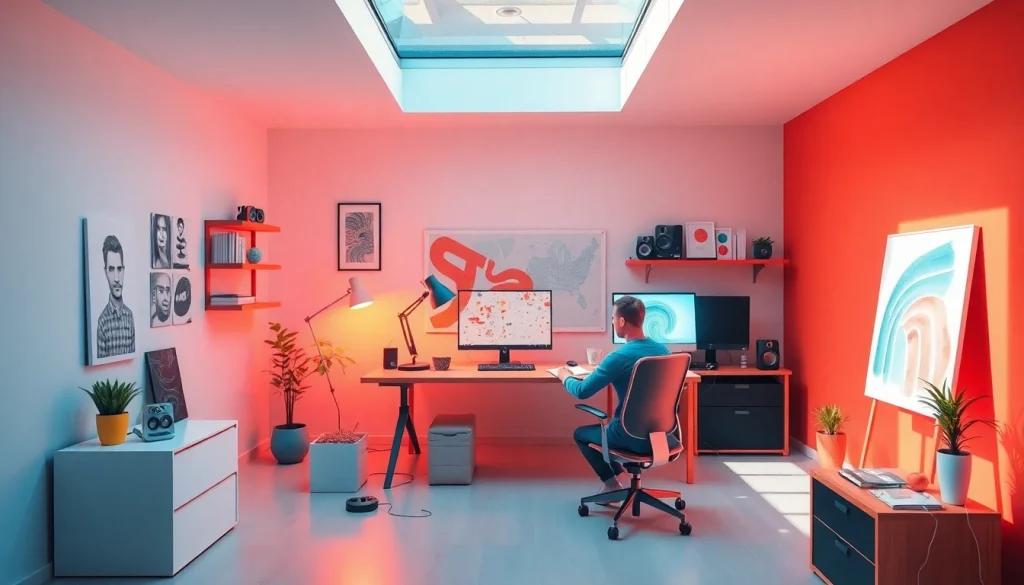Understanding Custom Graphic Design
In the visually-driven world of marketing and branding, Custom Graphic Design serves as a crucial element for businesses seeking to convey their message effectively. From logos to social media graphics, effective design can elevate your brand, engage your audience, and promote your products or services. This comprehensive article will explore what custom graphic design entails, its significance in business, and how to maximize its impact.
Definition and Importance of Custom Graphic Design
Custom graphic design refers to creating visual content tailored specifically to meet the needs of a client. Unlike stock designs, which can be generic and lack personal touch, custom designs are crafted to resonate with a brand’s audience and reflect its values. This individuality can greatly influence a consumer’s perception and decision-making process, serving as a powerful tool in the marketer’s arsenal.
Key Elements of Effective Graphic Design
Effective graphic design encompasses various elements, including:
- Color: The color palette can evoke emotions, create associations, and enhance brand recognition.
- Typography: The choice and arrangement of fonts can significantly affect readability and tone.
- Imagery: High-quality images, illustrations, and icons are essential for capturing attention and conveying messages quickly.
- Space and Layout: Proper use of white space ensures clarity and focus, guiding viewers through the design effortlessly.
Common Misconceptions
Many people confuse graphic design with mere decoration; however, it is strategic communication. Some common misconceptions include:
- Graphic design is only about aesthetics.
- Anyone can design with the right software.
- Custom designs are not worth the investment.
Benefits of Custom Graphic Design for Your Business
Enhancing Brand Identity
A well-crafted custom graphic design can significantly enhance your brand identity. This helps in creating a unique visual language that differentiates your business in a competitive landscape. Consistency in branding, where colors, fonts, and design elements are utilized across various platforms, fosters familiarity, generating trust and loyalty among users.
Engagement and Consumer Connection
Custom designs can evoke emotional responses from your audience. By telling your brand’s story through carefully curated visuals, you can create deeper connections with your constituents. Interactive graphics, such as infographics or engaging social media posts, encourage audience participation and enhance engagement rates.
Increased Visibility and Sales
High-quality graphic designs can lead to increased visibility both online and offline. When users are drawn to visually appealing materials, they are more likely to share them across platforms, enhancing your reach. The correlation between quality design and enhanced sales performance is well-documented, substantiating the ROI of investing in custom graphic design.
Choosing the Right Designer for Your Custom Graphic Needs
Factors to Consider When Hiring
Choosing the right designer can make or break your project. Key factors to consider include:
- Experience: Look for designers who have experience in your industry or related fields.
- Style: Review the designer’s portfolio to ensure their style aligns with your vision.
- Communication: Effective communication is crucial for successful collaboration. Ensure they understand your goals and vision.
Interview Questions to Ask a Graphic Designer
When interviewing a designer, consider asking questions such as:
- What is your design process?
- Can you provide examples of previous work similar to what I’m looking for?
- How do you handle feedback and revisions?
- What tools and software do you use for graphic design?
Portfolio Review and Client Testimonials
A designer’s portfolio should speak volumes about their capabilities. Examine not just the aesthetics but also the effectiveness of the designs. Client testimonials can provide insights into the designer’s work ethic, reliability, and ability to meet deadlines.
Implementation Steps for Custom Graphic Projects
Setting Clear Project Goals
Starting a graphic design project without clear goals can lead to misunderstandings and unsatisfactory outcomes. Goals should be Specific, Measurable, Achievable, Relevant, and Time-bound (SMART) to guide the entire project from inception to completion.
Feedback and Collaboration Techniques
Constructive feedback is vital. Establish a routine for check-ins or reviews, utilizing collaboration tools to streamline communication and document changes. Design software that allows for commenting on drafts can significantly enhance collaboration.
Finalizing and Releasing Your Design
Before releasing your design, ensure that all elements align with your original goals. Check for consistency in branding and effectiveness in messaging. Once finalized, strategize on how to launch the design across various platforms for maximum impact.
Measuring the Success of Your Custom Graphic Design
Metrics to Track Design Effectiveness
Analyzing the effectiveness of your designs involves tracking various metrics, including:
- Engagement Rates: Measure how users interact with your graphic content, such as likes, shares, and comments.
- Conversion Rates: Assess how many viewers of your graphic design took the desired action.
- Traffic Analytics: Monitor website traffic before and after the implementation of graphic design to gauge its impact on visitor numbers.
Analyzing Consumer Feedback
Collect and analyze feedback from customers regarding your design. This can be done through surveys, social media engagement, or direct communication. Understanding your audience’s perceptions can provide insights for future projects.
Adjusting Strategies Based on Performance Data
Regularly revisiting your strategies based on performance data is key to ongoing success. If certain designs underperform, it may require re-evaluation of elements like color, imagery, or messaging. Staying agile allows you to adapt and enhance your visual strategies over time.


